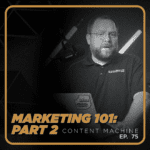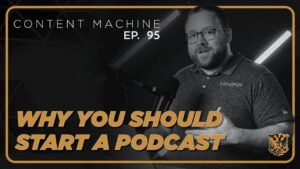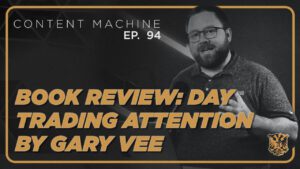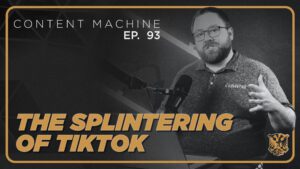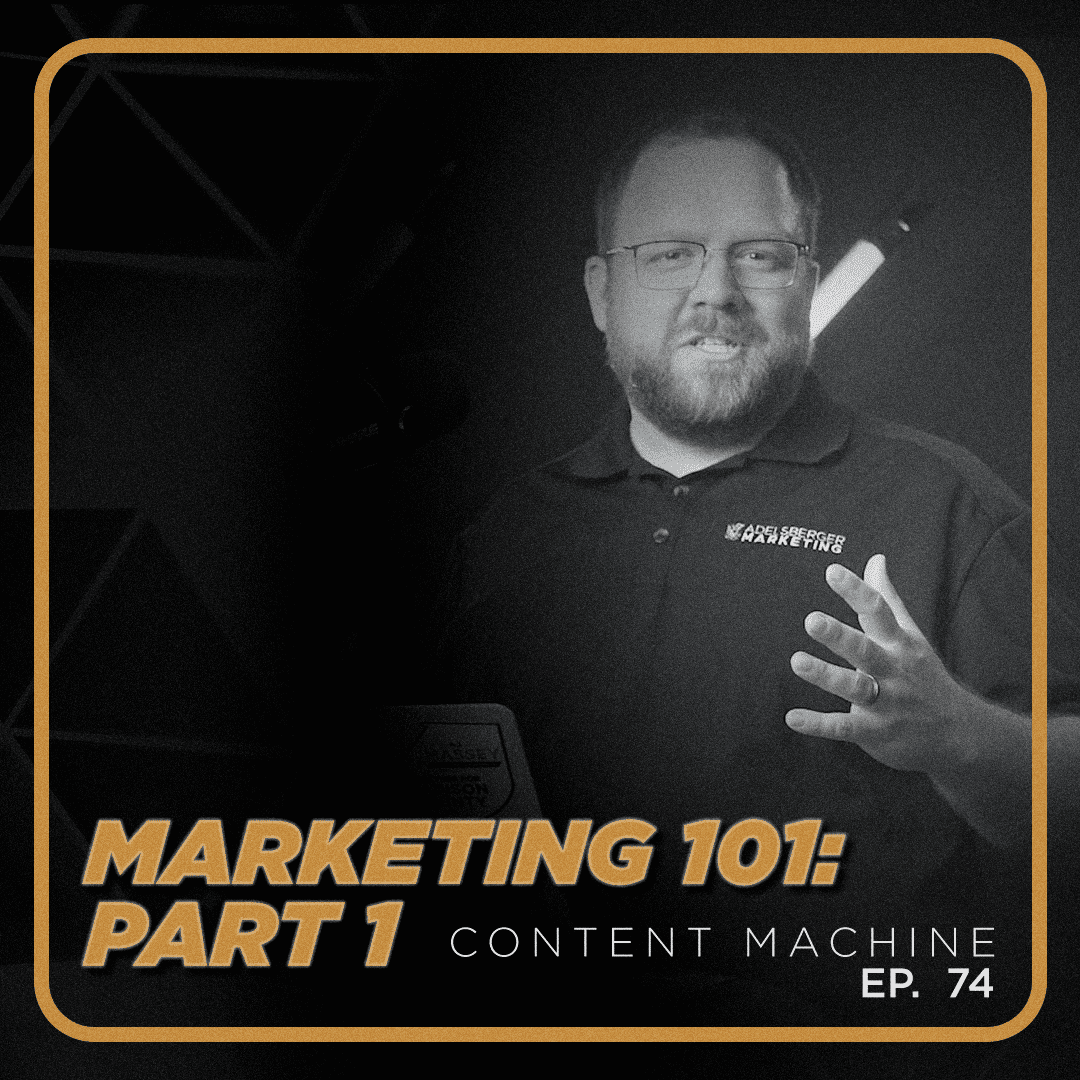
Welcome back to the Content Machine podcast. Over the next couple of episodes, we’re going to look at some really fundamental pieces of marketing, a marketing 101. Turn up the volume, get set, and let’s dive in here. What is marketing? My definition of marketing is getting people’s attention and motivating them to action. Because sometimes people get confused between what is marketing and what is sales. Well, Marketing is getting the attention and motivating them to get to the sales point. So sales is the transactional work of making the sale, which can also include relationship management over time. The line between the two can be really blurry, but marketing, in general, is setting up for the sale. Now, in small organizations, there’s not a real hard line between the two. I do marketing and sales for my company. But the larger the organization, there’s usually a clear divide between the two. And marketing should always be setting up sales, and they should be working together in that end. A couple of other big pieces of terminology that I want you to think about when you think about marketing is, one, inbound versus outbound. Inbound is marketing that we’re dealing with people who are coming to find you and providing resources to make them want to do business with you.
Outbound is marketing activity that reaches out to people, usually through paid media. And then I’m going to nerd out on branding for just a moment. We classify branding in four There are different categories. There’s the identity, which is the mission, vision, and core values of a business. There’s positioning, which is what we bring to the market and how we bring it to the market. There’s messaging, how we communicate who we are and what we are. And then finally, there’s the visual branding, which is what people sometimes confuse for branding, which is logos, colors, and look and feel. So when you are starting with your marketing and you have a base understanding, you want to have a really good understanding understanding of who you are as a company. What is it that you bring to market? Is it a product or is it a service? Or isbv it a product that is sold as a service? Or is it a service that’s sold as a product? What are people really buying from you? We call this positioning. So are they buying convenience from you or are they buying that item? It’s sometimes a little bit more complicated than what it looks like on paper.
The next thing is, how do you bring it to market? Now, for some companies, this is hugely important. You might be selling oil changes, but the difference is it becomes a mobile oil change and you go to someone’s house. That takes what you bring to market and how you bring to market into a really clear view. You are doing mobile oil change. It’s a service rather than just a product. And how you go to market with things can, almost in our era, be more important than what you were bringing to market. The next thing you should think about is what are your competitive advantages? What makes you distinct? Things like service and trust are hard to sell because they’re not quantifiable. Anybody can say that they sell service and trust. They might not be able to prove it over time, but on the initial customer intake, anybody can say that. Local can be an advantage, but it’s also not as important to many people as it should be. Sometimes you can be the fastest or the only provider. Understanding what your distinct advantage in the marketplace is or working to refine define and create that distinct marketplace advantage is a key part to being successful in marketing.
It’s important to think about who else is bringing this to market. So keeping an eye on competitors and thinking broadly about who competitors may be So for example, we were consulting with a nonprofit once who didn’t have anybody else in the immediate region that provided the same set of services that they do. Well, yeah, they don’t have a direct competitor, but every The other nonprofit is competing for the charitable dollars of that community. And so think broadly about who the competitors might be. Is there anybody else fulfilling the need that you’re fulfilling, even if it is not directly fulfilling that need in the same way that you are? Then once you’ve got what makes you just distinct and competitive, and you think about who else is in the market providing those things, think about how you can do it differently or better. Ace Hardware and Lowe’s provide the same general things. Lowe’s has a lot more opportunities for those. They’ve got more SKUs to sell. Ace Hardware, smaller SKUs, smaller store, but has that reputation for the helpful hardware folks. It’s got people in the store that are knowledgeable and experienced, and that’s where they’ve built their brand so that if you’re not sure what you need, you might go to Ace Hardware.
If you know exactly what you need, you might go to Lowe’s. So Ace Hardware and Lowe’s have different competitive advantages they bring to the market. Same thing with a state farm agent and a non-captive agent. State Farm has this big marketing budget, and they can take care of a lot of things, and they have some technology that they can use. But if you’re a non-captive agent, so a local insurance agency that represents lots of companies, You have the advantage of being able to look at different marketplaces to get the best rate. And so being able to determine what your advantages are against someone else in your space is super important. What is ours? Well, we think about things like local as one. People like to be able to talk to us and see us in person. Holistic. We like to approach projects from a big picture with our marketing projects with people. We like to talk about these questions that we’re talking about on this podcast. But thinking holistically about an individual marketing project so that we’re not just providing a video, but we’re fixing a problem. And we also call that working with strategy first as well.
So can you define your competitive advantage? If you don’t have one, what can you do to create one? Could you add a new service line? Could you make it easier for your customers to do business with you? Can you have something unique that you can plant your flag on that’s a good reason for people to do business with you? That’s episode one of the Fundamental Series. We’ll be back with more episodes in the future on this topic.


